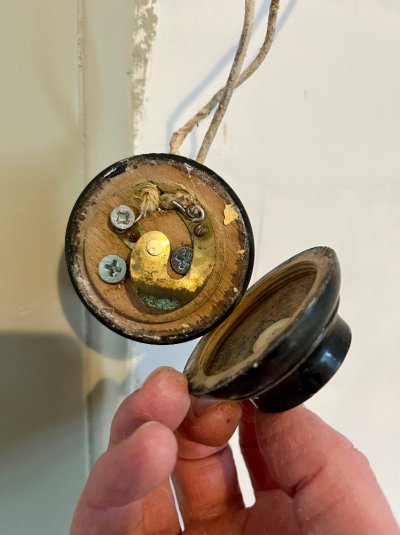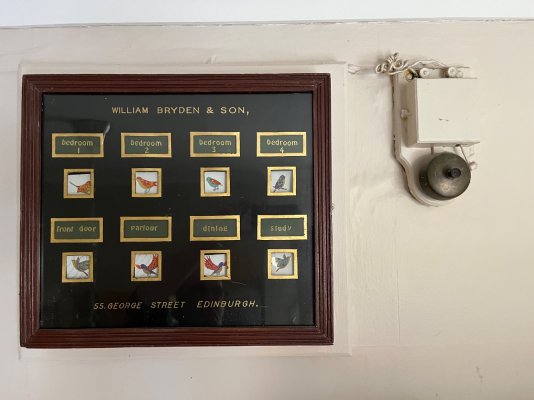Flyfisher
Member
- Messages
- 10,487
- Location
- Norfolk, UK
You are correct about the bell operation. At least, that's the way the bell works on my panel and I think that would be the norm for most (all?) panels at the time.I assume the bell is also an electromagnet make/break type - electromagnet gets energised, pulls down the ringer to hit the bell, this breaks the circuit, deenergises the e/m. A spring pulls the ringer back up, remakes the circuit, on comes the e/m and we start again. That would be normal for bells of this vintage. So, I am struggling to fathom how you could have a setup where the electromagnet and the bell are in series on a circuit and the flag electromagnet remains energised without also operating the one on the bell?
Genuine questions: I am probably being very dumb and I am definitely not trying to argue - I am trying to learn
I think your confusion about how the bell and flag electromagnet can work when connected in series lies in the assumption that the electromagnet remains energised while the bell is ringing. It doesn't, for precisely the reason you described due to the make/break/make/break operation of the bell mechanism. However, the result is that instead of being energised with a constant voltage, the flag electromagnet is energised with a 'pulsed' voltage, and the design of the electromagnet and flag assembly is such that this pulsed voltage is sufficient to pull and retain the flag 'pendulum' against (or very near to) to the electromagnet. When the bell switch is opened, the electromagnet is fully de-energised and the flag pendulum is thus released and able to swing back and forth for a short while, clearly indicating which bell switch had been pressed.
As I said previously, it's quite elegant in its simplicity and is a wonderful example of the KISS philosophy . . . . something that my wireless implementation is certainly not, if you consider everything going on behind the scenes, as it were, even though the end result is the same.


